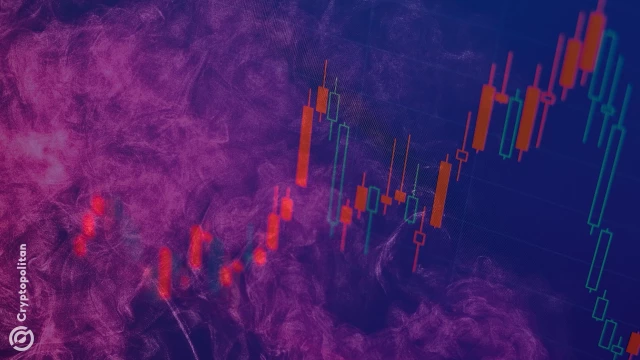
Russia's Moscow Exchange reaches $5 million trading volume in crypto index futures
Cryptopolitangeneral
The trading volume in the crypto index futures recently released by Russia's Moscow Exchange has already exceeded 5 million in U.S. dollar equivalent. More than 1,500 investors participated in the first session.
📋 Article Summary
Russia's Moscow Exchange Sees Surging Demand for Crypto Index Futures
In a significant development for the Russian cryptocurrency market, the newly launched crypto index futures on the Moscow Exchange have already generated impressive trading volumes, underscoring the growing institutional and retail investor appetite for exposure to the digital asset class.
The exchange reported that the trading volume in these crypto index futures contracts has exceeded $5 million in just the initial trading session, with more than 1,500 investors participating. This rapid uptake highlights the strong demand from both institutional players and individual traders to gain exposure to the volatile but potentially lucrative cryptocurrency markets through regulated, exchange-traded derivative products.
The launch of these crypto index futures on the Moscow Exchange is a notable milestone, as it represents Russia's increasing embrace of the cryptocurrency industry despite the country's historically cautious approach. By offering investors an institutional-grade way to gain exposure to a basket of leading cryptocurrencies, the exchange is tapping into the growing mainstream acceptance of digital assets as an asset class worthy of portfolio diversification.
Analysts believe this development could have broader implications for the Russian crypto ecosystem. The availability of regulated crypto futures on a major national exchange may encourage greater participation from institutional investors, who have traditionally been hesitant to enter the crypto space due to concerns over lack of market structure, liquidity, and regulatory oversight. The Moscow Exchange's stamp of approval could help to allay some of these fears and pave the way for increased institutional capital flows into the Russian cryptocurrency market.
Furthermore, the success of these crypto index futures could prompt other exchanges in the region to follow suit, leading to the proliferation of similar derivative products across Eastern Europe. This could enhance the overall liquidity and maturity of the regional crypto markets, making them more attractive to global investors seeking diversification and exposure to emerging digital asset trends.
However, the rapid growth of the crypto futures market in Russia is not without its challenges. Regulatory oversight and investor protection will be crucial considerations, as policymakers seek to balance the need for innovation with robust safeguards against market manipulation and systemic risks. Ongoing collaboration between the exchange, regulators, and industry stakeholders will be essential to ensure the sustainable development of this new asset class.
Looking ahead, the success of the Moscow Exchange's crypto index futures could signify a turning point in Russia's approach to cryptocurrency. As the country continues to navigate the complex regulatory landscape surrounding digital assets, the demonstrated demand for these institutional-grade products may prompt further regulatory reforms and the emergence of a more supportive ecosystem for cryptocurrency businesses and investors. This could have far-reaching implications for the global crypto industry, as Russia's embrace of digital assets could catalyze broader adoption and innovation within the region and beyond.